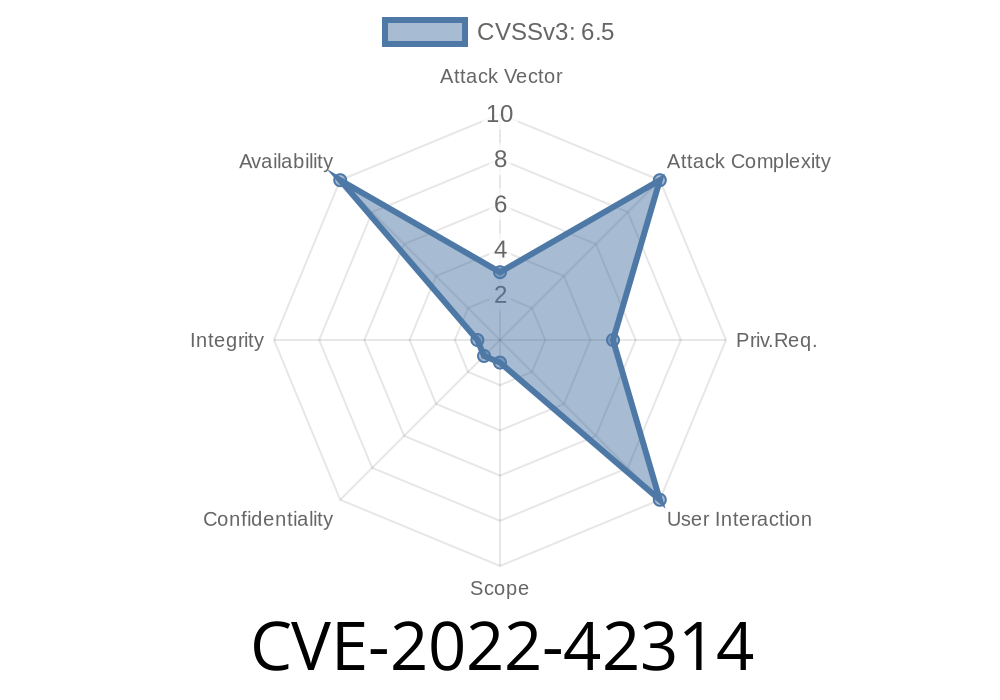CVE-2022-42314 is a critical vulnerability discovered in the Xenstore subsystem of the Xen hypervisor, which allows malicious guests to cause xenstored to allocate excessive amounts of memory, ultimately leading to a denial of service (DoS) in xenstored. This vulnerability has far-reaching consequences for cloud environments, as it enables attackers to disrupt the functioning of the Xen hypervisor and its guests.
Vulnerability Details
Xenstored is a critical component of the Xen hypervisor which manages a database for storing configuration and runtime information for the virtual machines. Malicious guests can exploit this vulnerability by causing large memory allocations in xenstored using multiple methods:
1. By issuing new requests to xenstored without reading the responses, causing the responses to be buffered in memory:
# Pseudo-code demonstrating the exploit
for i in range(100000):
send_request_to_xenstored("read_request") # Generate new read request
2. By causing large number of watch events to be generated, via setting up multiple xenstore watches and then e.g. deleting many xenstore nodes below the watched path:
# Pseudo-code demonstrating the exploit
for i in range(100):
send_request_to_xenstored("watch_request") # Generate new watch request
for i in range(100000):
send_request_to_xenstored("delete_node_request") # Generate new delete node request
3. By creating as many nodes as allowed with the maximum allowed size and path length in as many transactions as possible:
# Pseudo-code demonstrating the exploit
for t in range(100):
send_request_to_xenstored("begin_transaction") # Begin new transaction
for n in range(4096): # Maximum number of nodes
send_request_to_xenstored("create_node_request") # Create new node with max size and path length
send_request_to_xenstored("end_transaction") # End transaction
By accessing many nodes inside a transaction
# Pseudo-code demonstrating the exploit
send_request_to_xenstored("begin_transaction") # Begin new transaction
for n in range(100000):
send_request_to_xenstored("access_node_request") # Access as many nodes as possible
send_request_to_xenstored("end_transaction") # End transaction
Links to Original References
1. Xen Advisory - Official Xen advisory detailing the vulnerability and its consequences.
2. CVE-2022-42314 - CVE entry for this vulnerability on the MITRE website.
3. Xenstore - A detailed explanation of Xenstore and its role in managing virtual machines within the Xen hypervisor.
Exploit Details
By exploiting this vulnerability, an attacker can initiate out-of-memory situations in xenstored, which could lead to a denial of service (DoS) attack. This can have severe implications in a multi-tenant cloud environment running on the Xen hypervisor, as the attacker can potentially disrupt the operations of other important services and virtual machines. Preventing xenstored from running out of memory is crucial to ensure smooth functioning of the Xen hypervisor and its guests.
Since this vulnerability can have a significant impact on the stability and reliability of virtualized environments, it is highly advisable for administrators to apply the appropriate patches and follow the recommended security practices to mitigate the risks associated with CVE-2022-42314.
Timeline
Published on: 11/01/2022 13:15:00 UTC
Last modified on: 12/09/2022 18:04:00 UTC
